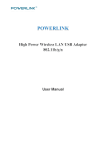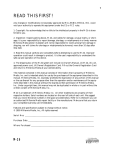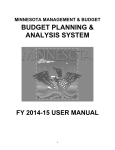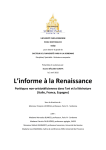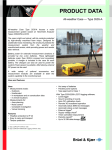Download Voting System Qualification Test Report Dominion Voting Systems, Inc.
Transcript
Voting System Qualification Test Report Dominion Voting Systems, Inc. Democracy Suite, Release 4.14.17, Version 3 ______________________________________________ May 2015 Florida Department of State Division of Elections R. A. Gray Building, Room 316 500 S. Bronough Street Tallahassee, FL 32399-0250 Contents Executive Summary ................................................................................................................................ 3 Introduction/System Overview .............................................................................................................. 4 Background............................................................................................................................................. 4 System Overview .................................................................................................................................... 4 Components under Review .................................................................................................................... 6 Conduct of Tests / Findings .................................................................................................................... 6 Physical Audit ..................................................................................................................................... 6 Functional System Audit .................................................................................................................... 7 Voting Equipment Menus – Administrative and Diagnostic Reports ............................................ 7 Mock Elections ............................................................................................................................... 7 Mass Ballot Count – ICE Precinct Tabulator .................................................................................. 8 Accessibility – Sound Pressure Level ............................................................................................. 9 Contest Recounts ......................................................................................................................... 10 Modem ........................................................................................................................................ 10 Folded Ballot ................................................................................................................................ 11 Scanner Sensitivity ....................................................................................................................... 11 Battery Life................................................................................................................................... 12 ICE Dual Monitor.......................................................................................................................... 12 IR Security Sensor ........................................................................................................................ 13 Source Code Review ......................................................................................................................... 13 Continuous Improvement / Recommendations................................................................................... 13 Conclusion ............................................................................................................................................ 13 Appendices ........................................................................................................................................... 14 Acronyms ......................................................................................................................................... 14 Figures Index .................................................................................................................................... 15 Tables Index ..................................................................................................................................... 15 Florida Department of State Division of Elections Voting System Qualification Test Report DVS Democracy Suite, Release 4.14.17, Version 3 Executive Summary Dominion Voting Systems, Inc., (DVS) submitted an application requesting Florida voting system certification of Democracy Suite Release 4.14.17, Version 3, which is a modification to a previously certified voting system, Democracy Suite Release 4.14.17, Version 2 (approved on April 9, 2014). DVS’ request included two modifications to the previously certified system: (a) the firmware of the ImageCast Evolution (ICE) precinct tabulator added a “Dual Display” feature that allows for concurrent voting sessions for Americans with Disabilities (ADA) and non-ADA voters; and (b) the list of compatible modems added a new cellular modem for use with the ICE’s results reporting. The Democracy Suite voting system is a paper-based voting system with an element for compliance with Help America Vote Act (HAVA) provisions for accessibility voting. The voting system consists of an election management system (EMS); two types of optical scan precinct count tabulators—the ImageCast Precinct (ICP) and the ICE; and a digital scan central count tabulator, the ImageCast Central (ICC). The certification test activity limited its scope to testing of the ICE precinct scanner, as no other voting system components were modified from the previously certified version (Version 2). The Bureau of Voting Systems Certification (BVSC) conducted the certification qualification testing in two phases. Phase I consisted of a physical audit to verify the setup configuration of the EMS, the restoration of elections, and a functional audit. Phase II comprised the conduct of mock elections and all election cycle events. BVSC conducted specific tests during this phase to verify compliance with standards for sound pressure levels and to observe ballot sensitivity. BVSC also conducted other tests to verify compliance with Florida Voting System Standards, Florida Statutes and Rules, and HAVA, as well as general observations of the voting system. BVSC also conducted a mass ballot count on the ICE precinct tabulator. Phase II was a noticed event open to the public. Qualification test results affirm that the Democracy Suite Release 4.14.17, Version 3, met applicable requirements of the Florida Voting Systems Standards, Florida Statutes and Rules, and the Help America Vote Act (HAVA) for usability and accessibility. BVSC, therefore, recommends certification of the referenced voting system. 3 Florida Department of State Division of Elections Voting System Qualification Test Report DVS Democracy Suite, Release 4.14.17, Version 3 Introduction/System Overview Dominion Voting Systems, Inc., (DVS) submitted an application requesting Florida voting system certification of Democracy Suite Release 4.14.17, Version 3. DVS sought certification of a modification to a previously certified voting system, Democracy Suite Release 4.14.17, Version 2 (Version 2, Certificate #140409, approved on April 9, 2014). DVS’ request included two modifications to the previously certified (Version 2) system: (a) the firmware of the ImageCast Evolution (ICE) precinct tabulator added a “Dual Display” feature that allows for concurrent voting sessions for Americans with Disabilities (ADA) and nonADA voters; and (b) the list of compatible modems added a new cellular modem for use with the ICE’s results reporting. The Democracy Suite voting system is a paper-based voting system with an element for compliance with HAVA provisions for accessibility voting. The voting system consists of an election management system (EMS); two types of optical scan precinct count tabulators—the ImageCast Precinct (ICP) and the ImageCast Evolution (ICE); and a digital scan central count tabulator, the ImageCast Central (ICC). The certification test activity limited its scope to testing of the ICE precinct scanner, as no other voting system components were modified from the previously certified version (Version 2). BVSC conducted the certification qualification testing in two phases. Phase I consisted of a physical audit to verify the setup configuration of the EMS, the restoration of general and primary elections with their required media, and a functional audit. Phase II comprised the conduct of mock elections and all election cycle events, including loading the tabulators with the requisite media, opening polls activities and reports, feeding ballots, closing polls activities and reports, and election night and post-election reporting. BVSC conducted specific tests during this phase to verify compliance with standards for sound pressure levels and to observe ballot sensitivity, as well as other tests to verify compliance of the voting system under test. BVSC also conducted a mass ballot count, a required test for tabulators that undergo any configuration and/or parts modification. Phase II was a noticed event open to the public. Background The Florida Division of Elections certified Dominion Voting System’s Democracy Suite Release 4.14.17, Version 1 voting system on August 14, 2013; Democracy Suite Release 4.14.17, Version 1 (Revision 1) on January 15, 2014; and Democracy Suite Release 4.14.17, Version 2 on April 9, 2014. Testing for this iteration of the system, Democracy Suite Release 4.14.17, Version 3, occurred in the BVSC test laboratory in Tallahassee, Florida, in April and May 2015. System Overview The DVS Democracy Suite voting system election management system consists of the following software applications: Election Event Designer (EED) – a client application that integrates the jurisdiction, districts, contests, and candidate database as the main pre-voting phase. Results Tally and Reporting (RTR) – a client application used for integrating election results acquisition, validation, and reporting. Audio Studio (AS) – a client application that facilitates production of audio files. 4 Florida Department of State Division of Elections Voting System Qualification Test Report DVS Democracy Suite, Release 4.14.17, Version 3 Application Server (APPS) – a server application for executing processes such as rendering ballots, generating audio files and election files, etc. Data Center Manager (DCM) – a server application used in the back-end data center configuration. File System Service (FSS) - a Windows service application that helps read and write files on memory cards. Election Data Translator (EDT) – an end-user application used to export election data from an election project and import election data into the election project. The following scanning and tabulating devices and ADA voting device are used with Democracy Suite: ImageCast Precinct (ICP) tabulator is an optical scanner, accessible voting device with ballot review. The ICP is attached on a ballot box (Figure 1, ICP only). Figure 1. ImageCast Precinct tabulator (ICP) ImageCast Evolution (ICE) is a precinct-level optical scanner, with ballot marking capability, audio voting using the Audio Tactile Interface (ATI), and a tabulator connected to a ballot box. Audio accessible voting may be accomplished on the ICE via the main monitor, as shown in Figure 2, or through an external, or “dual,” monitor attached to the main unit (Figure 3). The dual monitor setup allows an accessible voting session to occur while the unit is in standard operating mode and scanning paper ballots. Figure 2. ImageCast Evolution (ICE) with ballot box Figure 3. ICE with secondary, “dual” monitor for accessible voting 5 Florida Department of State Division of Elections Voting System Qualification Test Report DVS Democracy Suite, Release 4.14.17, Version 3 The central count scanners are the ImageCast Central (ICC) tabulators (Figure 4). These systems use commercial-off-the-shelf (COTS) hardware with Dominion software. Figure 3. ImageCast Central tabulator (ICC) (model Canon DR-X10C shown) Components under Review This review included only test activities to verify that the modifications to the ICE firmware functioned as indicated by the vendor, as well as regression testing to ensure that the change did not affect the voting system’s previously verified compliance with applicable Florida Statutes, Administrative Rules, and Standards. Conduct of Tests / Findings The test objective included the examination of the ICE firmware, which added a “Dual Display” feature that allows for concurrent voting sessions for Americans with Disabilities (ADA) and non-ADA voters. The test objective also included the examination of a new modem, the Verizon UML295 cellular modem, to be added to the list of modems currently certified for use in the ICE tabulator. Physical Audit BVSC conducted a physical audit to verify that the voting system under test matched the specifications described in the application and the Technical Data Package (TDP) documentation. Findings: BVSC found no discrepancies with the setup of the Democracy Suite voting system configurations, or with the firmware update on the ICE precinct tabulator. 6 Florida Department of State Division of Elections Voting System Qualification Test Report DVS Democracy Suite, Release 4.14.17, Version 3 Functional System Audit BVSC conducted a functional system audit to verify that all components of the voting system operate as described in the TDP. Voting Equipment Menus – Administrative and Diagnostic Reports BVSC performed a functional audit by testing all available menu options and administrative reports as well as systems functions in the course of testing. Findings: The system performed as indicated in the vendor’s TDP and in accordance with the Florida Voting Systems Standards (FVSS), Florida Statutes, and Administrative Rules. Mock Elections BVSC conducted mock elections incorporating multiple-card ballots of varying ballot lengths (11-inch to 19-inch). BVSC used two election types: primary and general. The tests included both hand marked and machine marked ballots, as well as those cast via the accessible voting session on the ICE, and used singlecard and multi-card elections. BVSC simulated an election using the ICE, from initial preparations and Logic & Accuracy (pre-election activities) through voting (election activities), election night and precinct level reporting (post-election and reporting activities). BVSC used ballot test decks and pre-determined results to compare to actual results. Pre-Election Activities Pre-election activities included coding or verifying the coding of the election database for the two elections (primary and general), preparing the election media, preparing the ballot test decks, preparing and validating the expected results, and preparing the voting equipment. The primary election definition included a universal primary contest (UPC). Election Activities Election activities included opening polls, casting ballots using test decks (including hand marked ballots and ballots marked using the ICE dual monitor setup), and closing polls. Post-Election and Reporting Activities Testing included uploading and verifying election results in the EMS by election group (absentee, early voting, Election Day, and provisional voting). BVSC uploaded results directly for the primary election, and used modem communications for the general election. Results were compared against expected results. Post-election activities included generating reports. 7 Florida Department of State Division of Elections Voting System Qualification Test Report DVS Democracy Suite, Release 4.14.17, Version 3 Findings: The voting system performed as indicated in the vendor’s TDP and in accordance with FVSS, Florida Statutes, and Administrative Rules. Mass Ballot Count – ICE Precinct Tabulator Because the vendor updated the firmware of the ICE since the previously certified version, BVSC had to conduct a mass ballot count of the ICE precinct tabulator. BVSC performed the mass ballot count on the ICE using a 2014 primary election definition. The minimum requirement was a ballot count of 9,900 ballots on a single scanner. The test deck contained 1,006 onecard ballots. Staff ran the test deck through the ICE 10 times, for a total of 10,060 ballots. Specific details follow: Table 1. Mass Ballot Count details for ICE Election definition used: Miami-Dade County 2014 Primary Election Ballot length: 17 inches Number of scanner units used: 1 Number of test decks: 1 Number of runs per test deck: 10 Number of ballots per deck: 1006 Number of cards per ballot: 1 Total number of ballots cast: 10,060 Total number of vote targets: 529,610 8 Florida Department of State Division of Elections Voting System Qualification Test Report DVS Democracy Suite, Release 4.14.17, Version 3 Findings: The ICE met the acceptance criteria for the precinct scanner mass ballot count as shown in table below: Table 2. Acceptance criteria for ICE ICE Mass Ballot Count – Acceptance Criteria Expected Accepted Did the memory registers overflow? No Did the public counters increment appropriately? Yes Did the tabulated results agree with predetermined vote totals? Yes Number of errors (must not exceed 1 in 1,000,000 vote targets). An error is defined as a target scan that produces a result other than the expected result. ≤ 1/1M vote targets Number of multiple feeds (must not exceed 1 in 5,000 ballots). A multiple feed occurs when the machine pulls multiple ballots and does not “catch” the error. ≤ 1/5K ballots ≤ 3% total ballots Number of incorrect rejections of ballots (must not exceed 3%) Accessibility – Sound Pressure Level The sound pressure level test is conducted to verify conformance to section 101.56062(1)(g-i), F.S., which describes the sound pressure level standards for a voting system’s audio voting features. BVSC conducted a sound pressure level test on the ICE because the vendor upgraded the firmware since the previously certified version. BVSC used an ITU-T P.501 test signal, which it incorporated into an election definition. The test signal replaced the initial sound file normally heard by a voter at the beginning of an accessible voting session. The election definition played the test signal as a loop. BVSC took all sound pressure level measurements after the elapse of a complete loop to capture instrument readings across the entire loop. The test equipment included a Type I IEC 3182 Brüel & Kjaer Artificial Ear, a Brüel & Kjaer Free-field ½-inch microphone (Type 4189), and Brüel & Kjaer model 2250-A analyzer3. BVSC conducted the test using the commercial off-the-shelf (COTS) headphones provided by the vendor.4 1 ITU-T P.50 - “ITU-T” is the telecommunication standardization sector of the “ITU,” which is the International Telecommunication Union. ITU is a United Nations specialized agency for information and communication technologies. The “P.50” represents one of their “P Series” objective transmission standards/measures used for testing the transmission quality of artificial voices. 2 IEC - International Electrotechnical Commission. IEC 318 is a measure used for ear simulators as defined in ITU-T P-Series standards. 3 Brüel & Kjaer 2250 Analyzer - A hand-held analyzer and sound level meter that performs high-precision measurement tasks in environmental, occupational and industrial application areas. The manufacturer calibrated all equipment used in this test within the recommended calibration timeframes. 4 The vendor’s TDP specifies the following COTS headphones: Sony MDR G45LP headphones (Democracy Suite Florida Overview Manual), or Cyber Acoustics ACM-70 or equivalent (Component Version List). The vendor supplied AVID FV-060 headphones for testing, which are equivalent to the COTS headphones specified. 9 Florida Department of State Division of Elections Voting System Qualification Test Report DVS Democracy Suite, Release 4.14.17, Version 3 Findings: BVSC found that the ICE complies with the applicable statute. The results of the sound pressure level tests for the ICE are in the table below: Table 3. Sound pressure level test results - ICE Sound Pressure Level Test Results – ICE Average Maximum Average Minimum Volume Volume (dBA)5 (dBA) Right Headphone Left Headphone 107.80 107.40 77.10 76.60 Gain (dBA)6 Intermediate Level (dBA)7 30.7 30.8 89.40 89.10 Contest Recounts BVSC conducted a recount to verify compliance with section 102.141(7), F.S., and the FVSS. BVSC selected one countywide race and one district-wide race in the general election. The recount was conducted using an ICE-dual monitor. Per the TDP instructions, BVSC suppressed non-recount races in the EMS results software. Findings: BVSC found that the voting system complied with applicable statutes and standards. Democracy Suite allows the user to report results from only the affected races. Furthermore, the system permits a recount on more than one race at a time, as demonstrated by processing both the countywide race and districtwide race in one recount. Modem DVS has added a new cellular modem to the list of modems that can be used with the ICE precinct tabulator. BVSC examined the voting system’s ability to report and accumulate results from the ICE using the installed Verizon UML295 cellular modem. BVSC uploaded the results from the mock general election via a dial-up (analog) modem (Zoom 3095 V.92 external modem), as well as the wireless modem (Verizon UML295 cellular modem). Findings: The system functioned as expected. 5 Must be greater than 97 dBA (decibels weighted). Maximum volume minus minimum volume. Must be greater than 20 dB. 7 Must be between (Minimum volume + 12 dB) and 97 dB. 6 10 Florida Department of State Division of Elections Voting System Qualification Test Report DVS Democracy Suite, Release 4.14.17, Version 3 Folded Ballot Although Florida law and FVSS do not require this test, BVSC conducted a folded-ballot test to simulate absentee ballot processing. The objective was to observe the behavior of the ICE precinct count tabulator when it scans folded ballots. BVSC used a test deck comprised of elections with four ballot lengths (11-inch presidential preference primary (PPP) election; 14-inch municipal election; 17-inch primary election; and 19-inch general election). Each test deck included different fold types: Z-fold, C-fold, a fold through a vote target8, a fold through a write-in, and the maximum number of folds allowed per ballot length9. BVSC cast ballots into the ICE and compared the results. Findings: The ICE accepted all ballots except a 17-inch ballot and two 19-inch ballots with folds through the writein vote targets. The ICE misread the 17-inch ballot, and the two 19-inch ballots were interpreted as ambiguous marks. The ICE’s behavior in these test cases is considered an expected result, since folds through a write-in are outside of the vendor’s ballot printing specifications.10 In other words, ballots with such folds would be considered not meeting the vendor’s requirements for proper ballot preparation. Users of the ICE are cautioned to implement quality controls to ensure ballot preparations comply with the vendor’s printing specifications. Scanner Sensitivity Although no requirements exist for this test under Florida law and FVSS, BVSC subjected the ICE to scanner sensitivity testing. BVSC obtains results solely for information purposes. The purpose of the scanner sensitivity test is to observe the scanner’s ability to read marks made by various types of marking instruments (pens, pencils, highlighters, etc.). The sensitivity test also demonstrates the scanner’s ability to detect a marking when the vote target is not fully or properly marked (such as “”, “”, etc.). BVSC created the test decks by marking the first position on blank ballots with various marking instruments. The test deck included two ballots for each marking instrument: a baseline ballot with selected ovals fully marked ( ), and a test ballot marked with a horizontal line 1 millimeter thick through the center of the target ( ). For testing the scanners’ ability to detect a variety of improperly marked targets, BVSC marked the target using one of the vendor’s two approved pens (Sharpie Fine Point Permanent Marker, black). 11 BVSC compared these results to a baseline of the same targets, fully marked ( ), using the same pen. 8 Folds through a vote target are outside the ballot printing specification as outlined in the vendor’s documentation. See Dominion Voting Systems ImageCast Printing Specification, Version 1.0.0::23 (November 8, 2013), p. 19. 9 Dominion Voting Systems ImageCast Printing Specification, Version 1.0.0::23 (November 8, 2013), p. 19. 10 Ibid. 11 2.09 – ImageCast Evolution System Maintenance Manual, Version 1.1.0::128 (February 12, 2015), p. 15. 11 Florida Department of State Division of Elections Voting System Qualification Test Report DVS Democracy Suite, Release 4.14.17, Version 3 Findings: BVSC observed that the precinct and central count scanners are able to detect a wide variety of marks made by several different marking instruments. The ICE consistently accepted fully marked ovals, but gave ‘ambiguous mark’ messages for targets with 1 millimeter line markings, regardless of the marking instrument used, including the vendor’s recommended pen. Although the vendor clearly documents the recommended marking devices in its user manual and other documentation, and the use of appropriate marking devices will positively influence the scanner’s ability to read vote targets, properly marked vote targets will also contribute toward minimizing ballot misreads and ‘ambiguous mark’ messages. Battery Life BVSC verified that the ICE dual monitor setup, when disconnected from the electrical outlet, functioned for the time period stated in the TDP documentation. The documentation states that the battery pack is capable of powering the system “for a period of two hours under normal operating conditions (100 voters per hour, and two ADA voters per hour).”12 BVSC powered up the ICE using electrical power, with the dual monitor attached but no accessible voting session initiated. The ICE was set to Standard voting mode, with the battery fully charged. Once the ICE was in a “ready to cast ballots” state, BVSC disconnected the ICE from electrical power and left the unit running on battery power until the unit drained the battery and it performed an automatic, controlled shutdown operation. BVSC reconnected the AC adapter and reviewed the audit logs to determine the length of time the machine remained in a usable state, before complete drainage of the battery power occurred. No votes were cast during the battery interval. The table below reflects the outcome of this test. Table 4. Battery life test results Battery Life Test Results Battery Life per TDP Actual Battery Life ICE dual monitor setup 2 hours 5 hours 15 minutes Findings: The battery packs powered the ICE dual monitor setup for longer than the stated minimum battery life. It is expected that in a real-world scenario, in which the unit would be utilized during the battery interval, battery power would drain quicker relative to the number of ballots processed. ICE Dual Monitor BVSC examined the ICE with the dual monitor functionality. BVSC verified that the ICE dual monitor setup functioned as expected. Functions observed included serial and simultaneous voting, ballot casting using main and secondary monitors, and external monitor failure, as well as other tests. 12 2.08 – ImageCast Evolution System Operating Procedures, Rev. 1.1.0::163 (February 11, 2015), pg. 15. 12 Florida Department of State Division of Elections Voting System Qualification Test Report DVS Democracy Suite, Release 4.14.17, Version 3 Findings: BVSC found that the ICE dual monitor setup functioned as expected. IR Security Sensor The infrared (IR) paper sensor is a security feature which, when enabled for an election, allows only ballots printed on special IR-reactive ballot stock to be cast. The infrared (IR) paper sensor contained in the ICE and ICP/ICP-A detects paper infused with IR-reactive elements; when paper without the IR-reactive elements is inserted (as in the case of a fraudulent ballot), the tabulator rejects it. Counties have the option to enable this feature and print their ballots on the IR-reactive paper (IR security ballot stock), or use conventional ballot stock with the feature disabled. BVSC regression-tested the IR Security Sensor feature on the ICE to ensure that it functioned properly. Findings: BVSC found that the IR Security Sensor on the ICE operated as expected. Source Code Review BVSC examined the source code using the Klocwork source code analysis tool. Findings: BVSC determined that the source code posed no significant safety, security, or operational risks. Continuous Improvement / Recommendations During testing, staff encountered no issues that prevent certification of the Democracy Suite Release 4.14.17, Version 3 voting system. Conclusion Qualification test results affirm that Democracy Suite Release 4.14.17, Version 3, met applicable requirements of the Florida Voting Systems Standards, Florida Statutes and Rules, and the Help America Vote Act (HAVA) for usability and accessibility. The Florida Division of Elections, Bureau of Voting Systems Certification, therefore, recommends certification of the referenced voting system. 13 Florida Department of State Division of Elections Voting System Qualification Test Report DVS Democracy Suite, Release 4.14.17, Version 3 Appendices Acronyms ADA Americans with Disabilities AS Audio Studio BVSC Bureau of Voting Systems Certification DVS Dominion Voting Systems, Inc. EAC U.S. Elections Assistance Commission EED Election Event Designer EMS Election Management System FVSS Florida Voting Systems Standards HAVA Help America Vote Act ICC ImageCast Central Count Tabulator ICE ImageCast Evolution Precinct Count / ADA Tabulator ICP ImageCast Precinct Count Tabulator LAN Local Area Network RTR Results Tally and Reporting 14 Florida Department of State Division of Elections Voting System Qualification Test Report DVS Democracy Suite, Release 4.14.17, Version 3 Figures Index Figure 1. ImageCast Precinct tabulator (ICP).......................................................................................... 5 Figure 2. ImageCast Evolution (ICE) with ballot box .............................................................................. 5 Figure 3. ICE with secondary, "dual" monitor for accessible voting ...................................................... 5 Figure 4. ImageCast Central tabulator (ICC) (model Canon DR-X10C shown)........................................ 6 Tables Index Table 1. Mass Ballot Count details for ICE .............................................................................................. 8 Table 2. Acceptance criteria for ICE ....................................................................................................... 9 Table 3. Sound pressure level test results - ICE.................................................................................... 10 Table 4. Battery life test results............................................................................................................ 12 15 Florida Department of State Division of Elections Voting System Qualification Test Report DVS Democracy Suite, Release 4.14.17, Version 3 16
















